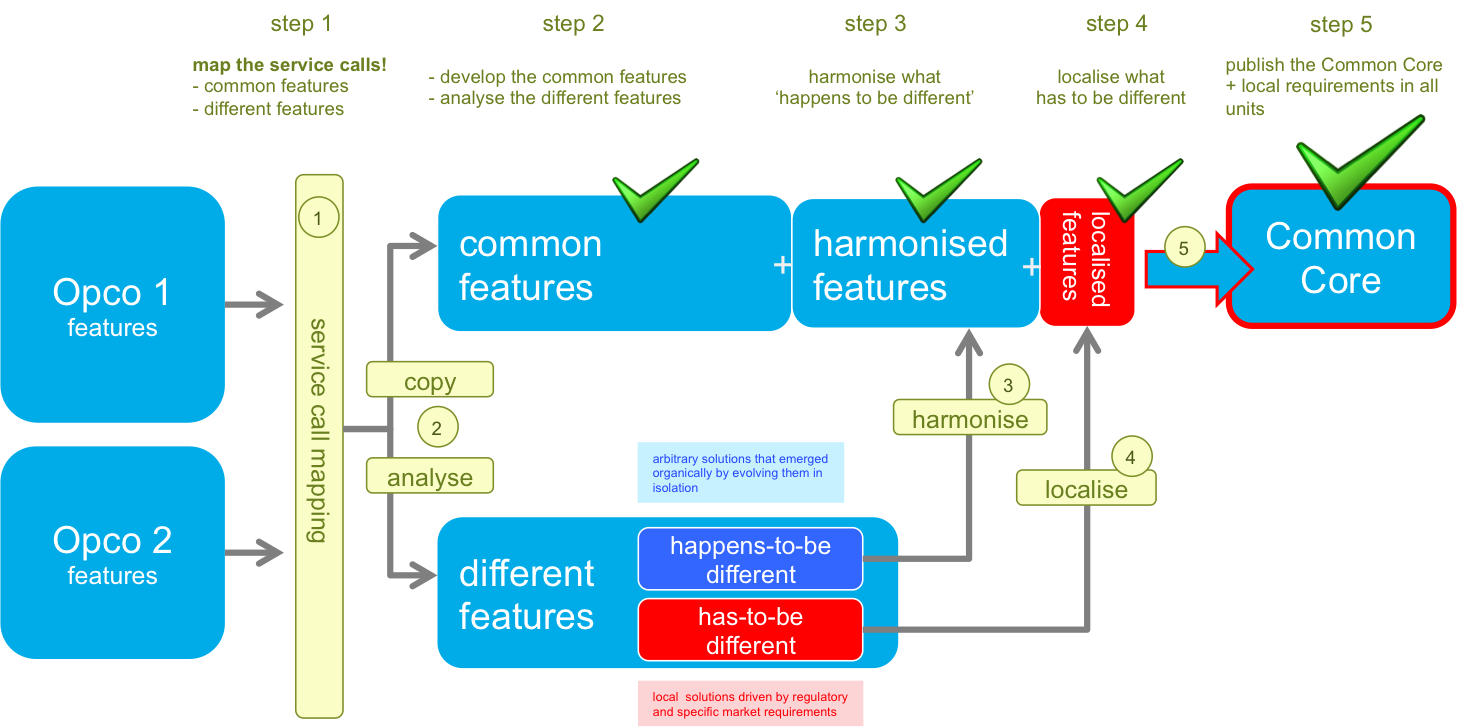
An important part of a digital transformation is the technology stack and how it supports the agile development of your (customer facing) frontends. This is important for a single stack, but exponentially important for those organisations which have grown via acquisition and where individual stacks have evolved in isolation, resulting in multiple technology solutions and the inevitable inconsistencies in user experience for your customers.
As your customers are likely to interact with your brand on a global level due to social media, relocation, or simply word of mouth,
Our customer’s behaviour is global. As people travel easily and have the world at their fingertips via tablets and smartphones they will consume from a connected and virtual world. Web portals, app stores, social media and even call centres are both hosted and available from any place in the world. When serving on a global scale inconsistencies become painfully apparent while the expectation of the customers becomes more demanding, namely driven by newly emerged internet companies who did not suffer (yet) from this harmonisation challenge, but were rather designed for a global presence from its initiation. In this world your inconsistencies become a detractor instead of the ‘local flexibility’ it once was. You need to harmonise, but where to start?
Harmonisation requires a target. A blue print that states the direction to which your units will converge. This can be a flagship unit, or a collection of best practices taken from several units across your footprint. This is not a simple task. In fact validating a flagship implementation or a collection of best-practices can take a lot of effort. For this reason it is important to aim for simplicity.
Simplicity
Simplicity has two benefits:
- it reduces the risk of overlooking critical aspects of your business model
- it identifies clearly which capabilities can be global (and shall be harmonised) and which capabilities need to be local (and shall be kept to cater for local circumstances)
Simplification entails a number of activities that are worth mentioning. The first is normalisation by ruling out local jargon, transferable currencies and other local nomenclature used to describe or organise processes and propositions that are very similar in essence. Secondly it is about deciding on how much of the so called ‘long tail’ is worth keeping. the latter requires a courageous look at your revenue drivers and decide which ones cause disproportionate complexity against their contribution to the bottom line. Thirdly, and this might be the hard part, it is about convincing the local operation to embrace a simplified, and later harmonised, reality. This can be hard, because you might find an emotional bond between the creative solutions that have worked for years and the people who came up with them. You will find remnants of that Valentines campaign’s ‘special conditions’ that were offered to a segment of customers or that site, hosted from underneath someones desk, that has served an obscure website with utmost predictability.
Fact is that these types of creative solutions deserve the praise for when they came into play, but require to be cleaned up to allow for scale and a speedy time-to-market. Complexity has a hidden cost and keeping your stack, solution portfolio and the value propositions to your customers clear and lean is a virtue with a strong up-side.
Target blueprint
there are a number of blue prints to be considered. The ‘ingredients’ of your value proposition, the IT architecture and the touchpoint & service blueprints, to name a few. Each of these require a dedicated, yet aligned approach. One leads to the other and this can be done in a number of ways of which I will describe one to illustrate a possible approach taken from the telco industry:
— updated daily —
- simplify the value proposition
- define target blue print
- assess the delta between each unit and the blue print
- systematically ‘rinse and repeat’ the capabilities toward the target without jeopardising the daily business routine
- maintain a light-but-strong governance to keep new inconsistencies from sneaking in

